Laxmikanth Summary: The Indian Federal System Overview | Indian Polity for UPSC CSE PDF Download
What is Federalism in India?
- Federalism is a system of government in which powers have been divided between the centre and its constituent parts such as states or provinces.
- It is an institutional mechanism to accommodate two sets of politics, one at the centre or national level and second at the regional or provincial level.
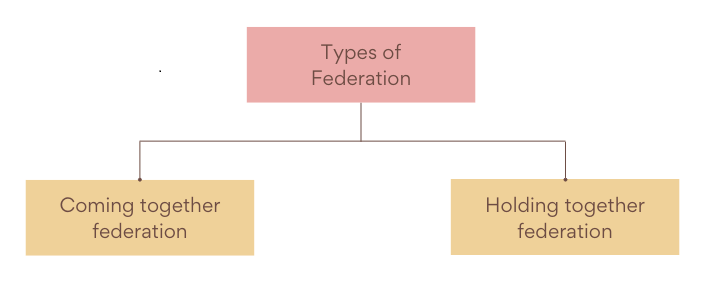
What is Coming Together Federation?
- In this type, independent states come together to form a larger unit. Here, states enjoy more autonomy as compared to the holding together federations.
Example: USA, Australia, Switzerland.
What is Holding Together Federation?
- In this type, powers are shared between various constituent parts to accommodate the whole entity's diversity. Here, powers are generally tilted towards the central authority.
Example: India, Spain, Belgium.
How can we define Federalism in India?
- India is a federal system but with more tilt towards a unitary system of government.
- It is sometimes considered a quasi-federal system as it has features of both a federal and a unitary system.
- Article 1 of the Indian Constitution states, ‘India that is Bharat shall be a union of states’. The word federation is not mentioned in the constitution.
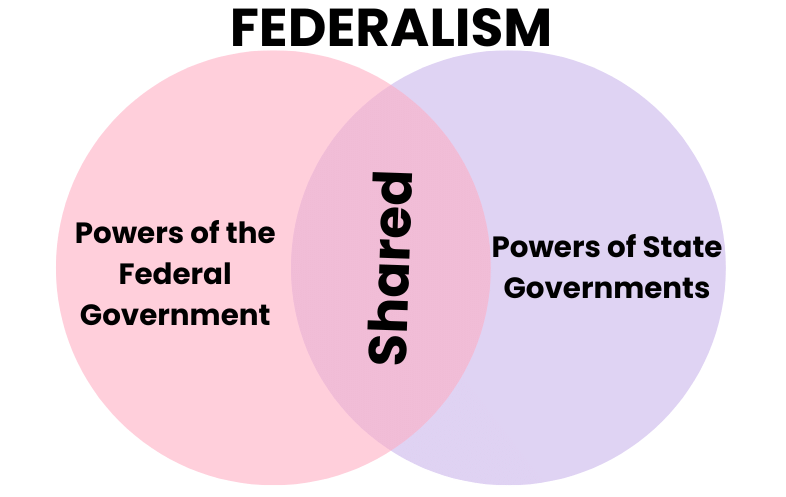
- Elements of federalism were introduced into modern India by the Government of India Act of 1919, which separated powers between the centre and the provincial legislatures.
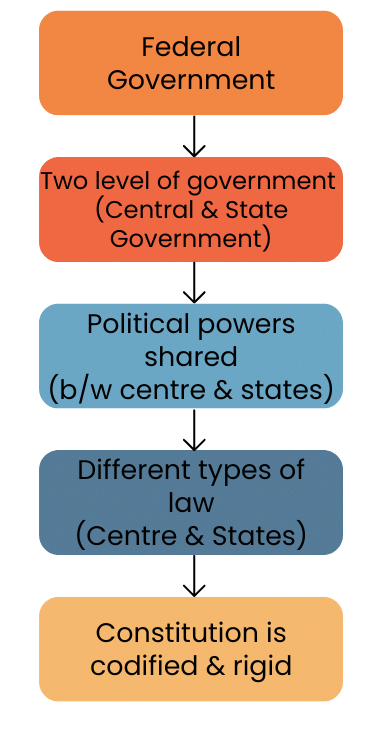
- The Constitution of India provides for a federal system of government in the country. The framers adopted the federal system due to two main reasons: the large size of the country and its socio-cultural diversity. They realised that the federal system ensures the country's efficient governance and reconciles national unity with regional autonomy.
- The Indian federal system is based on the 'Canadian model’ and not on the "American model’. The "Canadian model'' differs fundamentally from the American model’ in so far as it establishes a very strong centre.
Would you like to watch a video Instead on Federal System in India? Watch Federal System video and learn in your preferred format.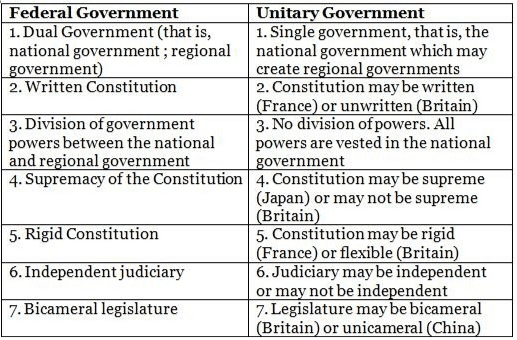
What are the Federal Features of the Indian Union?
- Governments at two levels: Centre and States
- Division of powers between the centre and states: There are three lists given in the Seventh Schedule of the Constitution which gives the subjects each level has jurisdiction in:(i) Union List
(ii) State List
(iii) Concurrent List - The supremacy of the constitution: The constitution's basic structure is indestructible as laid out by the judiciary. The constitution is the supreme law in India.
- Independent judiciary: The constitution provides for an independent and integrated judiciary. The lower and district courts are at the bottom levels, and the high courts are at the state levels and at the topmost position is the Supreme Court of India. All courts are subordinate to the Supreme Court.
What are the Unitary Features of the Indian Union?
- The flexibility of the Indian constitution: The constitution is a blend of flexibility and rigidity. Certain provisions of the Constitution can be easily amended. In case the amendments seek to change aspects of federalism in India, the provision to bring about such amendments is not easy.
- More power vests with the Centre: The constitution guarantees more powers to the Union List. On the Concurrent List, the parliament can make laws that can override the state legislature's laws on some matters. The parliament can also make laws regarding certain subjects in the State List.
- Unequal representation of states in the Rajya Sabha: The representation of the states in the upper house is based on the states" populations. For example, Uttar Pradesh has 31 seats and Goa, 1 in the Rajya Sabha. In an ideal federal system, all the states should have equal representation.
- The executive is a part of the legislature: In India, the executive in both the centre and the state is a part of the legislature. This goes against the principle of division of powers between the different organs of the government.
- Lok Sabha is more powerful than the Rajya Sabha: In our system, the Lok Sabha is more powerful than the upper house, and unequal powers to two houses are against the principle of federalism.
- Emergency powers: The centre is provided with emergency powers. When an emergency is imposed, the centre has increased control over states. This undermines the autonomy of the states.
- Integrated judiciary: The judiciary in India is integrated. There is no separate judiciary at the centre and the state levels.
- Single citizenship: In India, only single citizenship is available to citizens. They cannot be citizens of the state as well.
- Governor’s appointment: The governor of a state acts as the centre's representative in the state. The state government does not appoint the governor, the centre does.
- New states formation: The parliament has the power to alter a state's territory by increasing or reducing the area of the state. It can also change the name of a state.
- All India Services: Through the All India Services such as the IAS, IPS, etc. the centre interferes in the executive powers of the states.
- Integrated election machinery: The Election Commission of India is responsible for conducting free and fair elections at both the centre and India's state levels.
- Veto over states bills: The governor of a state can reserve certain bills for the president's consideration. The president enjoys absolute veto on these bills. He can even reject the bill at the second instance that is when the bill is sent after reconsideration by the state legislature.
- Integrated audit machinery: The country's president appoints the CAG who audits both the centre and the states' accounts.
Read Federal & Unitary Features of the Indian Constitution to understand the difference in details and to build your concept stronger on Federalism for your UPSC CSE.
What are the Issues and challenges faced by Indian federalism?
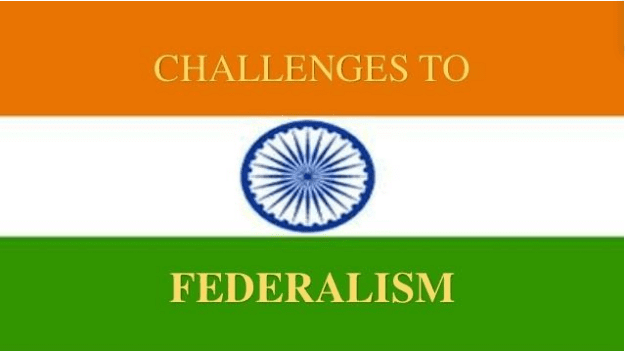
1. What is Regionalism?
- It is considered one of the significant challenges to federalism in India.
- Federalism best thrives as a democratic system when it mitigates power-sharing centralization between the centre and the states.
- The voice for the demand of more states has become more prominent in recent times, especially after the formation of Telangana in 2014. Recent demands like the four-fold division of Uttar Pradesh and the creation of Gorkhaland from West Bengal are instances of aggressive regionalism that pose a threat to India's federal structure.
- The agitations for Gorkhaland, Bodoland, and Karbi Anglong have been revived. This is apart from the new demands for a separate Vidarbha State in Maharashtra, Harit Pradesh and Poorvanchal in Uttar Pradesh.
- For instance, West Bengal threatened India's Teesta river waters treaty with Bangladesh because of its possible potential costs for West Bengal.
2. What is the Absence of Fiscal Federalism?
- The Indian Constitution, while expressly vesting the Centre with greater powers of taxation, also provides for an institutional mechanism the Finance Commission to determine the share of the States in the Central tax revenues by way of correcting this imbalance.
- At present, about 40 per cent of Central revenues (tax and non-tax)are transferred to the States, including the grants they get from the Planning Commission and the Central Ministries.
3. What is Centralized Amendment Power?
- The centre has the right to amend under Article 368. The Centre has the authority to change any provision without consulting the states. Even state ratification is only employed in a small number of cases whereas we see in a federal form of government, both the state and the union have the ability to amend.
4. What is the Indestructible Union with Destructible Units
- Unlike successful federations, the India Constitution doesn't have the provision for states' secession from India's Union. The Union has been made indestructible with a view to protecting unity and integrity in a country like India.
5. Is the Office of the Governor a part of the Federal System?
- The governor's office for each state in India has been a sensitive issue as it sometimes poses a threat to the federal character of the Indian Union. Centre's visible arbitrariness in misusing such constitutional office has been the subject of acrimonious debates and divergent opinions in the country.
- The imposition of President's Rule in Arunachal Pradesh in January 2016, while there was an elected government in the State, created a bizarre incident in India's constitutional history. The Supreme Court on July 13 termed Governor's decision unconstitutional and ordered restoration of Congress government in Arunachal Pradesh.
6. The Citizenship and Federalism
- The Indian Constitution, unlike the other federal constitutions of the world, introduces single citizenship. It is based upon the idea of one nation, one citizenship. All are citizens of India irrespective of whichever state he/she lives in. The States don't confer any separate status as a citizen of the State.
7. Integrated Services and Federalism
- The integrated judiciary is a typical feature of Indian federation. Unlike typical federations, in India Supreme Court is the apex court and all other courts are subordinate to it. The States don't have separate independent courts dealing specially with state matters. Also, the machinery for election, accounts, and audit in India is integrated.
8. Centralised Planning as a part of Federal India
- Although economic and social planning is found in the Concurrent List of the Seventh Schedule to the Constitution, the Union Government enjoys unbridled authority over India's national and regional planning. Centralised planning, through the Planning Commission, has been replaced by NITI Aayog, which is also appointed by the Centre, considerable preponderance in legislative power for the Union, the state's financial dependence on the Centre’s mercy, and the administrative inferiority of the states make the states meek and weak.
9. Language Conflicts and Federal Constitution
- Diversity in languages in India sometimes causes a blow to the federal spirit of the Constitution. There are 22 languages constitutionally approved in India.
Read the Federal System to understand in depth about the Federal System in India from the UPSC point of view.
In this document, you have learnt
- It is sometimes considered a quasi-federal system as it has features of both a federal and a unitary system. Article 1 of the Indian Constitution states, ‘India that is Bharat shall be a union of states’.
- Elements of federalism were introduced into modern India by the Government of India Act of 1919, which separated powers between the centre and the provincial legislatures.
- There are three lists given in the Seventh Schedule of the Constitution which gives the subjects each level has jurisdiction in:
(i) Union List
(ii) State List
(iii) Concurrent List
The representation of the states in the upper house is based on the states" populations. For example, Uttar Pradesh has 31 seats and Goa, 1 in the Rajya Sabha. In an ideal federal system, all the states should have equal representation.
The voice for the demand of more states has become more prominent in recent times, especially after the formation of Telangana in 2014. Recent demands like four-fold division of Uttar Pradesh and the creation of Gorkhaland from West Bengal are instances of aggressive regionalism that pose a threat to India's federal structure.
The imposition of President's Rule in Arunachal Pradesh in January 2016, while there was an elected government in the State, created a bizarre incident in India's constitutional history.
|
151 videos|780 docs|202 tests
|
FAQs on Laxmikanth Summary: The Indian Federal System Overview - Indian Polity for UPSC CSE
| 1. What is the basic structure of Federalism in India? |  |
| 2. How does the Indian Constitution ensure a federal structure? |  |
| 3. What are the key features of Indian Federalism? |  |
| 4. How does the concept of 'cooperative federalism' manifest in India? |  |
| 5. What challenges does the federal structure of India face? |  |

















